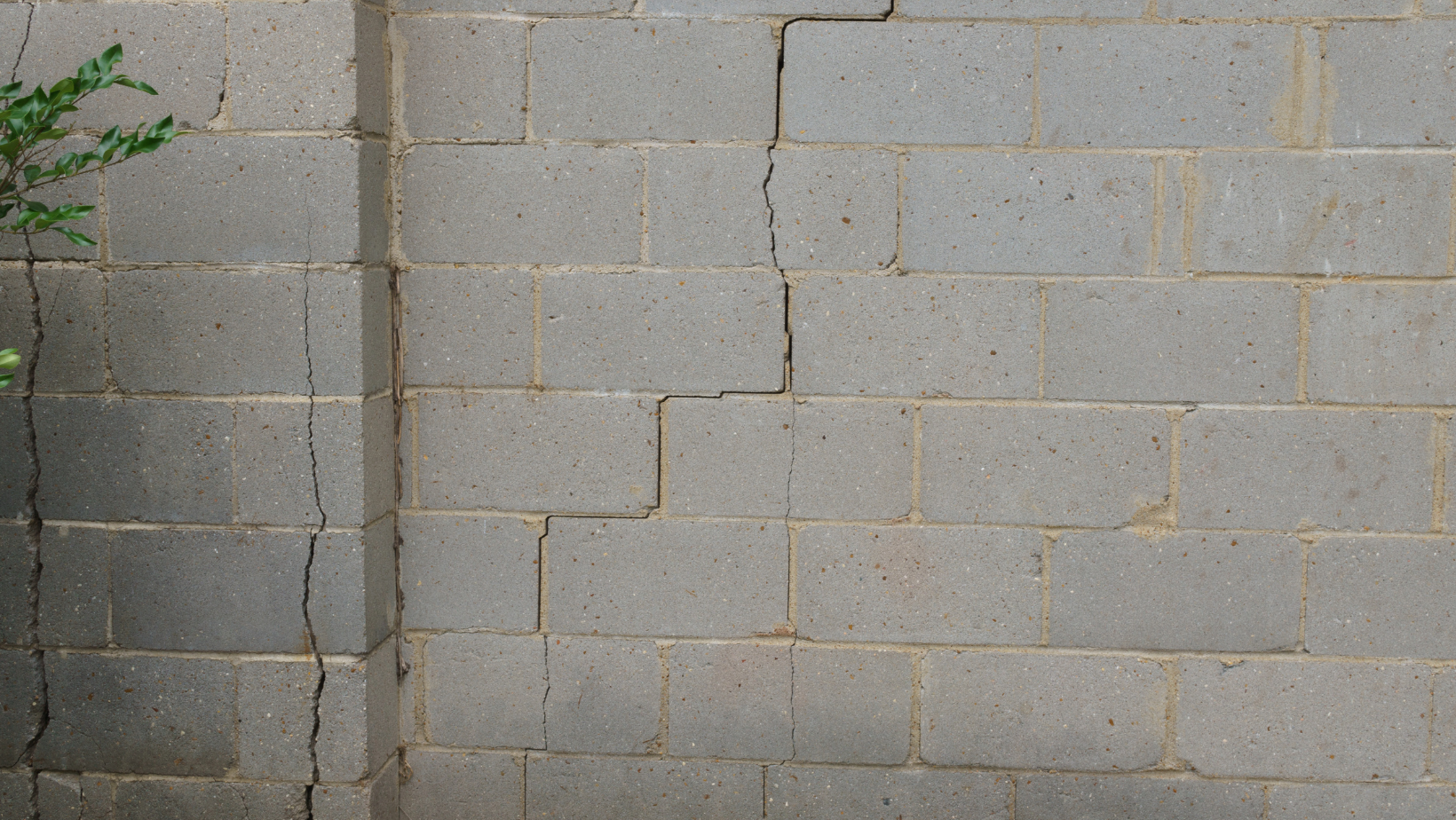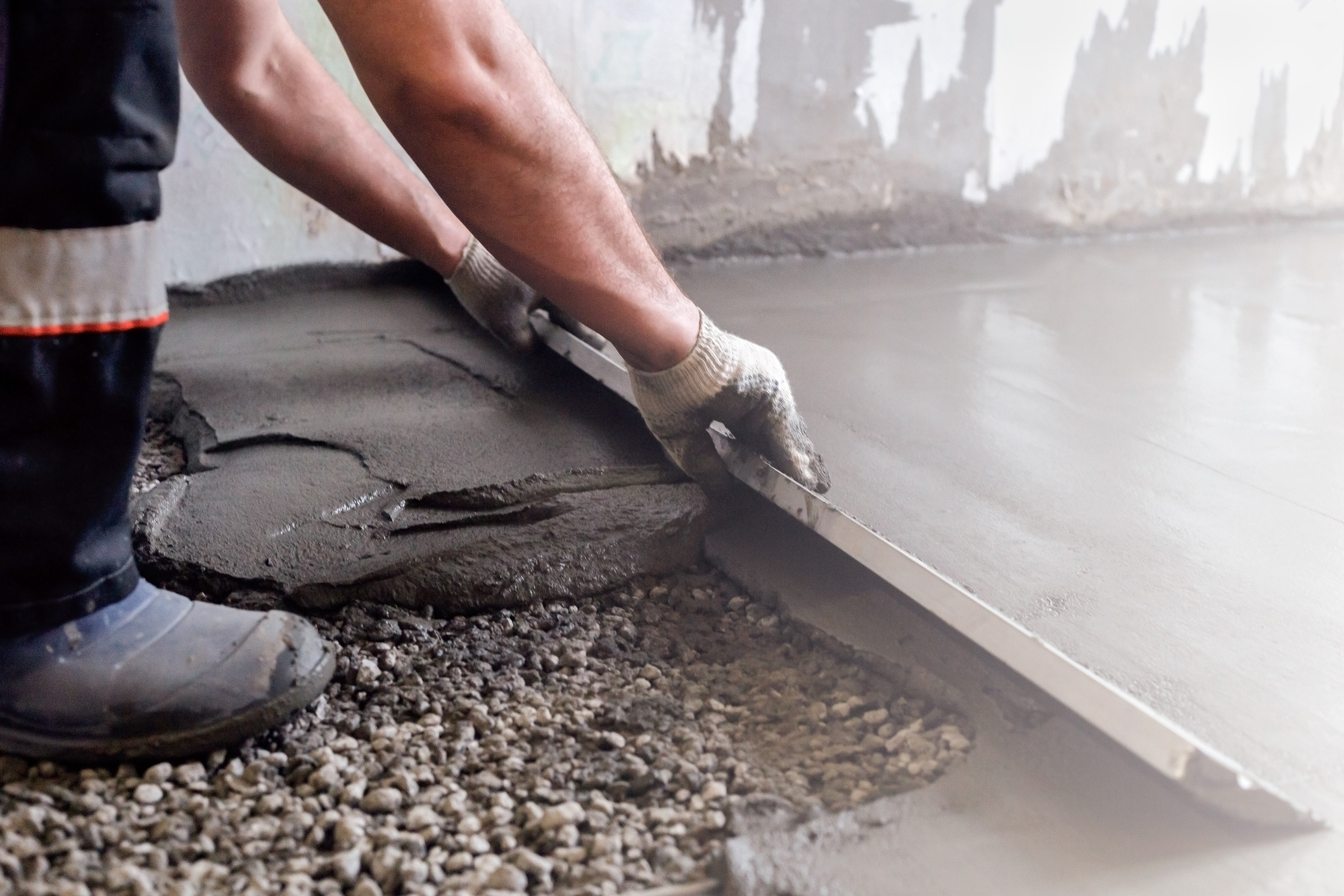
No one wants to spot cracks in their
foundation. Your first thought upon seeing that damage is likely: oh no, will my house fall over or sink? It’s probably not that dire of a situation, but it’s always good to get it checked out by a professional. Some cracks are harmless and common, while others are a warning flag.
As your foundation settles, it will crack naturally with age. In general, as long as the crack is thin and vertical, it’s probably fairly harmless. But how small is small, and how big is too big? Here’s a guideline.
If a crack is a “hairline,” or about the width of a strand of hair. This type of tiny crack will naturally occur when the house settles and isn’t really anything to worry about. But as more tension is placed on the concrete, like soil erosion on one side that causes the foundation to tilt, those small cracks will start to widen.
Tension and Erosion Cracks
If you have noticed a crack in your foundation that went from hairline to bigger in a certain period of time, this is when you should be alarmed. This could mean the crack was not caused by natural compression, which is an occurrence all foundations are built to handle, but rather it’s likely getting bigger as a result of tension.
Another reason for small cracks getting larger is erosion. Over time, water seeps into those cracks, attracting dirt, which will naturally erode them. In the winter, water seeps in and freezes, which also widens them. Have you noticed the edges of the crack fraying? Is the interior still looking like a hairline, though?
This may not be a tension problem, but rather an erosion issue. This is why, even when you have a hairline crack, you should invite a professional to inspect the cracks and seal them with epoxy. This will prevent the cracks from getting worse.
Horizontal cracks in the bed joint of a concrete block signifies a major breakdown and should not be ignored. This could mean that pressure from the soil behind it is pushing the wall to its breaking point. Wind pressure, corroded ties and an insufficient number of wall ties may also be causing the wall to bend.
Cracks that are wider at the top signal a dropping foundation and heaving center, while cracks that are wider at the bottom signal a heaving foundation and dropping center. Either situation should spur you to call a foundation repair expert.
Symptoms of More Serious Foundation Problems
Often, you’ll be clued into foundation problems by things you notice inside the home, such as:
- Bowing walls
- Cracks in drywall
- Misaligned doors and windows
- Sloping floors
- Cracks in ceramic tile and brickwork
If you have recently noticed a crack in your home’s foundation, you may be understandably concerned. Many types of cracks can signal serious damage to the structure, precipitating the need for immediate repairs. However, no homeowner wants to hear this, as foundation repair can be one of the most expensive home repairs you will have to make, costing between $10,000 and $40,000 on the extreme side.
However, if you don’t make the necessary repairs, you could do far more damage to your home, leading to much more expensive bills down the line. You’re best off addressing these issues now before they worsen and compromise the safety of your family. It will be the best money you have spent, giving you peace of mind.
Steps to Check Cracks in Foundation
Of course, not all cracks are bad. Some are perfectly normal and happen with the settling of your home over many years. The tricky part is, how to know which is which? That’s where a Houston foundation repair professional comes in.
Check out these steps to take if you see a crack in your foundation this year.
1. Check For Indoor Warning Signs
You can actually tell by some warning signs inside the house that your foundation cracks are causing trouble.
- Your doors don’t latch properly or begin to jam.
- Your windows won’t close right or they start to stick.
- You see cracks in your tile or vinyl flooring.
- You notice cracks appear in walls, around door and window frames, or wherever your walls and ceilings meet.
- In the basement, make sure all posts, piers, supports and beams are straight and level.
- Check for puddles or damp spots in your basement or crawlspace.
- Check the base of your chimney to see if it seems to be separating from the house.
2. Check For Outside Warning Signs
Check your foundation wall from every corner to make sure they are straight using a level. If you see that the foundation has started to curve, bulge, bow, or lean, it’s likely your foundation has shifted. Another thing to point out is that the soil around the foundation could be either too dry or too saturated, which puts pressure on the walls.
If you have a poured concrete foundation, inspect for areas of flaking or chipping. This could indicate that your foundation had too much water in it at the time it was poured, or that it has contaminants. This can lead to premature deterioration, cracking, or instability.
3. Determine Risk
Here’s a quick guide to determine the risk of foundation cracks in your home. You may be at a higher risk if:
- You own an older home with a stone or limestone foundation.
- Your home is built on a slope or hill, which brings water flow toward your foundation.
- You have soil around the foundation that contracts when dry and expands when wet.
- Your home and yard has poor drainage.
- The builder used low-quality materials or poured concrete that dried too quickly.
- Your area is subject to extreme temperate changes.
- Tree or plant roots around your home are stealing moisture from the surrounding soil, thereby drying out your foundation.
4. Take Action
If you have a legitimate concern, or even a sneaking suspicion, that the cracks in your foundation could be harmful, it’s important to contact a professional right away. Ignoring the problem will only make it worse and more costly later on.
So, even if you have minor cracks in your foundation, they still need TLC and attention. Got bigger cracks than you’re comfortable with?
Contact us today at 281-231-8904 and book an appointment for an inspection.




